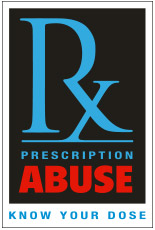NEWS & EVENTS
New AMA report details grim realities of worsening overdose epidemic
CHICAGO — The 2023 Overdose Epidemic Report (PDF), released today by the American Medical Association (AMA), finds opioid prescribing by physicians and other health professionals decreased for the 13th consecutive year, down nearly 50% since 2012, while overdoses and deaths related to illicitly manufactured fentanyl, xylazine and other synthetic substances continue to increase. In 2022, more than 107,000 people died from a drug-related overdose in the United States. Data shows the epidemic is increasingly impacting young people, Black and Brown people, and pregnant people.
There have been signs of progress in the past year—notably community-based distribution of naloxone by leading harm reduction supporters and approval by the U.S. Food and Drug Administration of over-the-counter (OTC) naloxone, which the AMA has long championed. Naloxone dispensing has increased more than 200% since 2018. The AMA continues to support widespread distribution of naloxone and urges physicians to educate patients on naloxone and prescribe to patients at risk of overdose.
“Naloxone is one success story we’ve seen this year because access to opioid-overdose reversal medications continues to save tens of thousands of lives,” said Bobby Mukkamala, M.D., chair of the AMA Substance Use and Pain Care Task Force. “Unfortunately, we are at a place where naloxone needs to be available as easily as a first aid kit or a defibrillator in public spaces. While we continue to study and address the underlying factors that contribute to substance use disorders, policymakers must look at additional, evidence-based harm reduction strategies to combat the skyrocketing number of overdoses.”
“The AMA remains focused on advocating for meaningful policy implementation and enforcement to support affordable, accessible, evidence-based care for patients with a substance use disorder as well as for patients with pain,” said Dr. Mukkamala. “Health insurers must stop dragging their feet when it comes to eliminating barriers to accessing these treatments and do their part to end the epidemic. Without action on the policy recommendations in this report, the epidemic will continue to harm and kill Americans.”
The report calls for immediate action on strategies including:
- An increase in harm reduction resources such as naloxone, syringe services programs and fentanyl test strips. Naloxone should be stocked in schools, universities, and other public venues. The AMA urges all manufacturers of overdose reversal agents to submit OTC applications and price their products responsibly. Payers must also cover naloxone at low- or no-cost.
- Policymakers should support legislative and regulatory actions to remove administrative and other barriers such as prior authorization, step therapy and dosage caps for medications to treat opioid use disorder (MOUD), including dosage caps on buprenorphine. The special rules that had prevented most physicians from prescribing buprenorphine were finally eliminated this year, but removal of the remaining barriers to care that needlessly prolong this devastating epidemic is long overdue.
- State insurance departments must enforce mental health and substance use disorder (SUD) parity laws. The Mental Health Parity and Addiction Equity Act (MHPAEA) was enacted in 2008 to protect individuals with a mental illness or SUDs. Because health insurers systematically fail to comply with the law on their own, state and federal regulators must (1) increase meaningful enforcement of the law; (2) significantly increase financial and other penalties against health insurers who violate the law; and (3) require comprehensive corrective actions from health insurers to meaningfully protect patients.
- State officials should remove punitive policies against pregnant individuals and parents who have a SUD. State departments of corrections and private jails and prisons need to ensure that all individuals with an opioid use disorder or mental illness receive evidence-based care while incarcerated—and are linked to care upon release. This includes ensuring access to MOUD.
Additional recommendations and data are in the full report (PDF).
State-by-state trend data for opioid prescriptions, MOUD, naloxone and state prescription drug monitoring programs can be found on the AMA overdose epidemic website.
Pain Management and the Opioid Epidemic: Balancing Societal and Individual Benefits and Risks of Prescription Opioid Use
“The committee recommends that states, with assistance from relevant federal agencies, particularly the Substance Abuse and Mental Health Services Administration, provide universal access to evidence-based treatment for opioid use disorder (OUD), including use of medication, in a variety of settings, including hospitals, criminal justice settings, and substance use treatment programs. Efforts to this end should be carried out with particular intensity in communities with a high burden of OUD. State licensing bodies should require training in treatment for OUD for all licensed substance use disorder treatment facilities and providers (Recommendation 5-6). The committee recommends that schools for health professional education, professional societies, and state licensing boards require and provide basic training in the treatment of opioid use disorder for health care providers, including but not limited to physicians, nurses, pharmacists, dentists, physician assistants, psychologists, and social workers (Recommendation 5-7). The committee recommends that the U.S. Department of Health and Human Services and state health financing agencies remove impediments to full coverage of medications approved by the U.S. Food and Drug Administration for treatment of opioid use disorder (Recommendation 5-8). ”
In the context of the growing opioid problem, the FDA launched an Opioids Action Plan in early 2016. One component of the FDA plan is to reassess the agency’s risk-benefit framework for opioid approval and monitoring. The FDA commissioned this study specifically to inform this reassessment. Read Full Study Here
MMA Seeks Comments on CDC Proposed Opioid Prescribing Guidelines
The Centers for Disease Control and Prevention (CDC) has released proposed guidelines for prescribing opioids for chronic pain. The Montana Medical Association is gathering comments on the guidelines from physician members to potentially submit feedback before the public comment period ends on Jan. 13 2016. The MMA is requesting members submit their comments to Jean Branscum at [email protected] by Monday, January 11th.
CDC Proposed Opioid Prescribing Guidelines
AMA Letter to CDC on Opioid Guidelines
In an email that went out the CDC offered this comment, “CDC is developing an opioid prescribing guideline to help primary care providers offer safer, more effective care for patients with chronic pain and help reduce misuse, abuse, and overdose from these drugs. The guideline will provide recommendations to primary care providers about the appropriate prescribing of opioid pain medications to improve pain management and patient safety. Recommendations focus on the use of opioids in treating chronic pain (i.e., pain lasting longer than three months or past the time of normal tissue healing). The guideline is not intended for patients who are in active cancer treatment, palliative care, or end-of-life care.”
Public comments for docket #CDC-2015-0112 can be voiced here.
MT Physicians Stand Tall in Know Your Dose Campaign
Prescription drug abuse and diversion is an epidemic – it affects everyone, and the statistics are staggering. Not enough Montanans are aware of the number of lives lost, making prescription painkillers 15 times more deadly than heroine, meth and cocaine combined.
Marc Mentel, D.O. was recently interviewed on Voices of Montana regarding this campaign click play below to listen in. The Montana Medical Association thanks the Northern News Network for their help in promoting the KnowYourDoseMT.org initiative.
As physicians, we are committed to providing compassionate care to our patients following best medical practices. There is not a pill for every ill. When it comes to the management of chronic pain this is a truth, a tough pill to swallow. The MMA is committed to being a positive resource that will encourage more physicians to take on the challenge of treating patients with chronic pain, so that access to care following current “best practices” will be improved, not restricted. With the tools and education on pain management and safe opioid prescribing found on knowyourdosemt.org, physicians and health care providers can be confident in their treatment of patients suffering from pain. We can ethically and reasonably care for patients and help get them to a better place in their life by following safer prescribing practices, monitoring and documenting. As medical best practices evolve bringing new knowledge to light that improves our ability to care for our patients, this website will evolve.
According to the MT Department of Public Health and Human Services, prescription drug overdoses were responsible for at least 369 deaths and more than 7200 hospital inpatient admissions and emergency department encounters in 2013 in our state. The consequences impact our families and friends, the communities we live in, and our workplaces. It also fills our physician offices and emergency departments. The MMA and our partners are committed to providing resources and education to help fight this epidemic while providing needed medical care through our Know Your Dose initiative.
We are committed to playing a pivotal role and applaud our partners — pharmacists, nurses, dentists, public health, and law enforcement officers who are equally committed to tackling the public health crisis of prescription drug abuse. We offer our gratitude to the Montana Medical Association Foundation, Blue Cross Blue Shield of Montana and Montana Department of Justice for providing resources, and to the Northern News Network for increasing awareness about this initiative.
It’s timely for others to step forward in support and for the general public to become more engaged. You can be a partner in reducing supply and stopping diversion by not sharing your medications, securing and disposing unused prescription drugs and watching for signs of diversion. We encourage you to join the fight in ending opioid abuse. Start the conversation in your community. Visit www.knowyourdosemt.org to make a donation and learn about this initiative.
Missoula – Marc Mentel, D.O., Montana Medical Association Prescription Drug Abuse Reduction Chair
A Glimpse into Rx Drug Abuse Know Your Dose Education
Rx drug abuse and diversion is a growing epidemic in Montana, contributing to the deaths of more than 300 Montanans each year. The Montana Medical Association and its partners designed this four module course to help health care teams find the proper balance between providing appropriate treatment for patients while protecting them from opioid addiction.
This short video provides you with just a glimpse into the four module online Prescription Drug Abuse Reduction training.
This series provides valuable information for physicians and non-physicians who are involved in patient care concerning opioid medications. Physicians are encouraged to include all appropriate members of their teams in this training. The program addresses the problem on a state and national level, how to prescribe opioids and how to communicate with patients about the dangers of prescription drugs. Non-physicians who complete the webinar and a post-webinar evaluation will also receive a certificate of completion.
MMA Vice President, William Gallea, M.D. – Speaks on Difficulty Treating Chronic Pain
The end of July marked the launch of www.knowyourdosemt.org. The resources now available are a result of the work put forth by many physicians and other health care providers serving on MMA’s Prescription Drug Abuse Reduction Committee. It includes an educational module and a health care provider toolkit containing downloadable forms available at no cost.
The launch started in Billings and ended the following day after its promotion in four towns across Montana. Doctor Bill Gallea, MMA Vice President made a call to have physicians, health care providers and the public help attack this public health crisis in Helena, Montana.
Contact the MMA Executive Office to learn how you can promote The Know Your Dose initiative in your community at [email protected].
Course Intended For All Specialties: Physicians, Dentists, Physician’s Assistants, Pharmacists, Nurses, Nurse Practitioners, Advanced Practice Nurses
Course Objectives:
- Implement recommended prescribing practices and alternate forms of treatment for patients presenting with acute or chronic pain.
- Use the toolkit and resources to manage patient treatment.
- Apply the state and federal laws as related to prescribing Schedule II drugs.
- Examine the prescription drug issue from a state and national level.
Access the Know Your Dose Medical Education Course.

